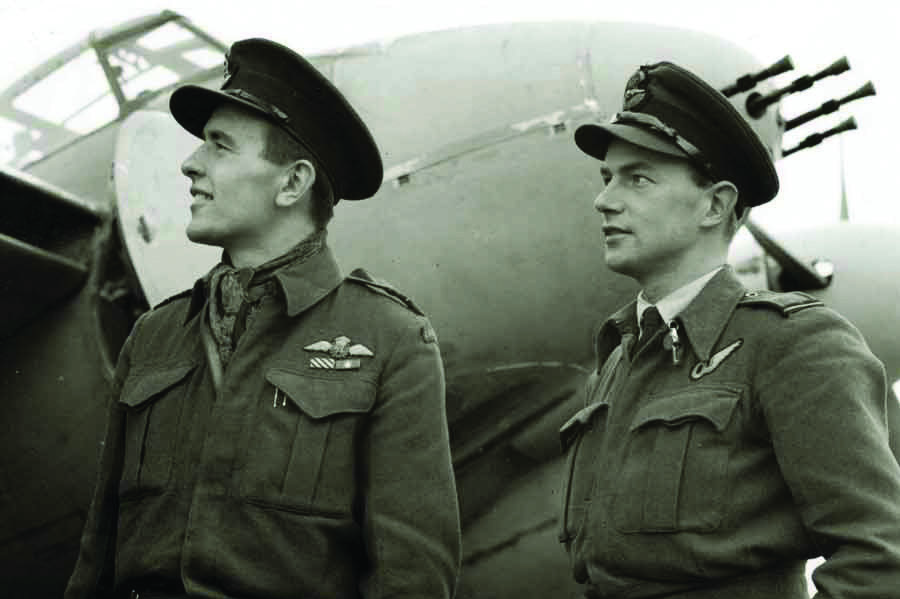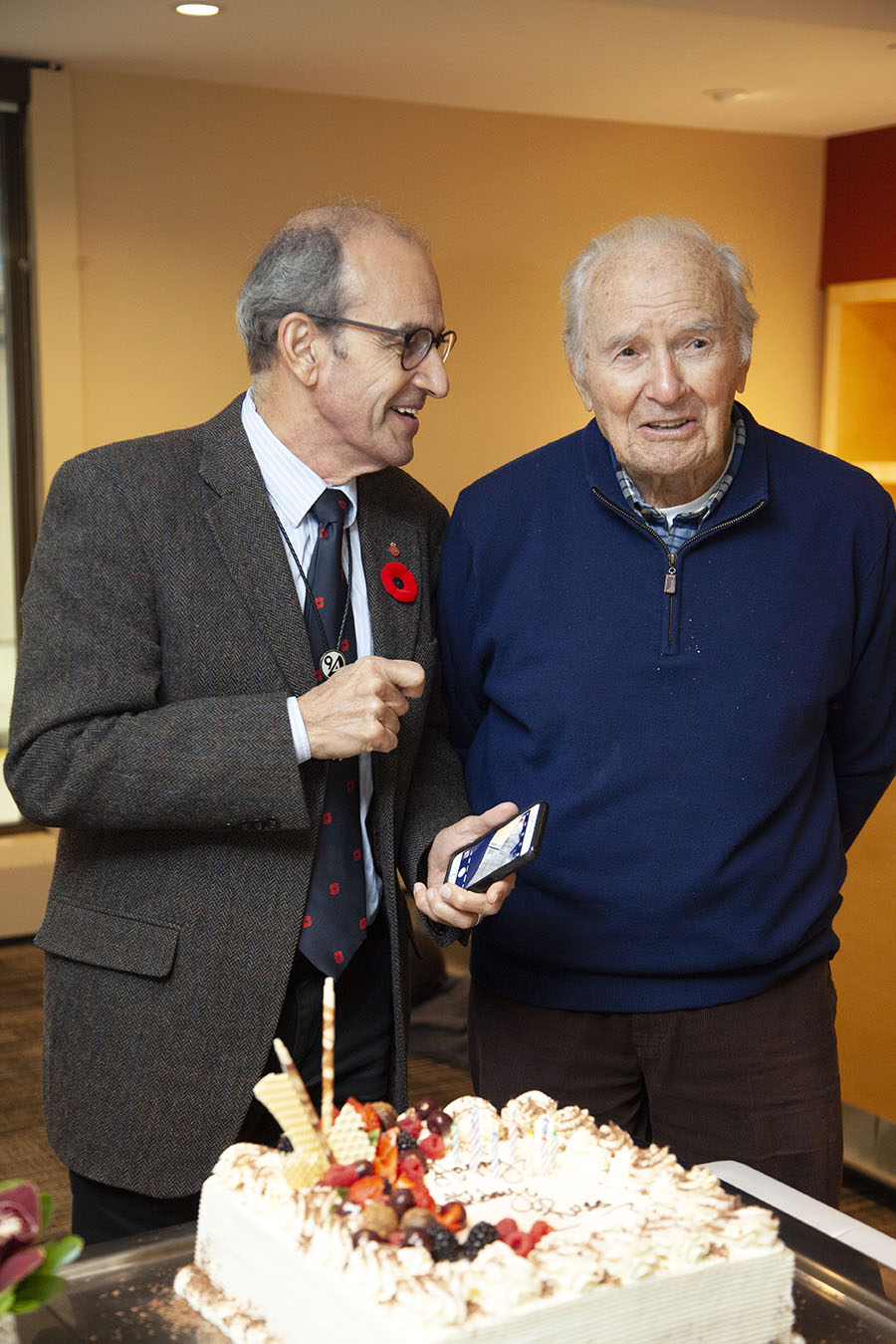
He was born the same year as the original Felix the Cat cartoon and the inventor of the Kalashnikov rifle. He survived the Spanish flu epidemic the year of his birth and, though he wouldn’t remember it, was a contemporary of the Treaty of Versailles that officially ended the Great War. His lifetime spanned the administrations of 22 Canadian prime ministers and four British monarchs. And tomorrow, Nov. 1, my friend and occasional visitor to our town, Russ Bannock, turns 100.
“The family’s gathering for birthday party – just the immediate family,” Russ told me this week. “They’ll fill a room at the Granite Club.”
I’ve known veteran aviator Russ Bannock for 40 years. Most recently back in the spring, he joined us downtown for the unveiling of Wynn Walters’ sculpture of Col. Sam Sharpe. A decorated fighter pilot (Distinguished Flying Cross, Distinguished Service Order), Bannock joined the Air Force in 1940 and served in Training Command, Ferry Command and Fighter Command through the Second World War.
He became this country’s second-highest-scoring ace of the war, with 11 confirmed kills in his Mosquito as a night intruder; his specialty was knocking down V-1 buzz bombs before they could fall on British cities. They called him “the cool professional.”
My favourite Russ Bannock story comes from the very beginning of his career in aviation. In 1937, Russ worked as a bar steward aboard a Hudson’s Bay Company steamboat heading north down the Mackenzie River. On his second trip he heard a mineral exploration company in Yellowknife was recruiting workers. He had to get there in a hurry.
He convinced a bush pilot to transport him there in time. At the appointed hour, Bannock arrived as Stan McMillan was packing freight into his Fairchild bush plane. But with all passenger seats and space full of cargo, Russ wondered where he was going to sit.
“Just climb on top of the load,” McMillan said.
So, on Bannock’s first-ever flight, he lay prone, wedged between the plane’s freight and its fuselage roof. The trip was not particularly pleasant. “The weather was bad, so we flew across Great Slave Lake and never got above a hundred feet. I’ll never forget it.” Then, he wired his father and told him he’d decided to become a flying geologist.
But the war broke out and Bannock immediately enlisted, expecting with his early entry and experience, he’d automatically get posted overseas. Instead the Air Force made him an instructor. Reluctantly he immersed himself in the job of giving other young pilot the skills to survive in military aviation.
“The work was like a factory,” he told me for my book about the British Commonwealth Air Training Plan. “We started at 8 a.m. and finished at five. You’d take a student up for an hour, debrief him, and then you were up with another – probably six different flights a day.”
In his two years of instructing, Bannock probably transferred his piloting skills to 150 other pilots. “It wouldn’t be uncommon for a hundred aircraft to take-off and land at our aerodrome each day and we didn’t have a single mishap.”
When Flying Officer Bannock arrived overseas in 1944, it was at the height of the V-1 buzz-bomb attacks. Nazi scientists would launch these pilotless bombs from sites on the coast of France; they would fly until their fuel ran out and fall with a tonne of explosives on factories and cities.
My friend Sean Rossiter described how Bannock would patrol the launch sites, watch a bomb fired into the air, chase and catch up to the bomb and then shoot it down without being consumed in the resulting explosion. Bannock became so skilled knocking down V-1s, the British nicknamed him “The Saviour of London.”

This week, my friend Doug McWhirter treated Russ and me to lunch. The centurion shared a number of his wartime piloting stories over soup and sandwich. Bannock remembered a night attack he made on a Luftwaffe air base in 1944. With his hands extended over the salt and pepper shakers at our table, he reenacted a dogfight with a German night-figher aircraft. Illustrating a tight turn he made trying to evade the fighter, he showed how his Mosquito went into a violent flip stall.
“If I hadn’t flown all those hours back in Canada as an instructor, that would have been the end,” Bannock said. “But we’d practised these maneuvers with student pilots all the time and I got out of the stall and escaped the fighter.”
Bannock told us – at nearly 100 – he still has his private pilot’s licence, but he has to renew it each birthday. We asked if he’d had a chance to update the licence in time for his 100th?
“No. I’ve been too busy with curling, bridge and birthday parties,” he said. “Besides, if I wait ’til just after I’m 100, maybe I’ll make it into the Guinness Book of Records.”
What a remarkable man! So happy that you were able to get to the birthday party.
Barb